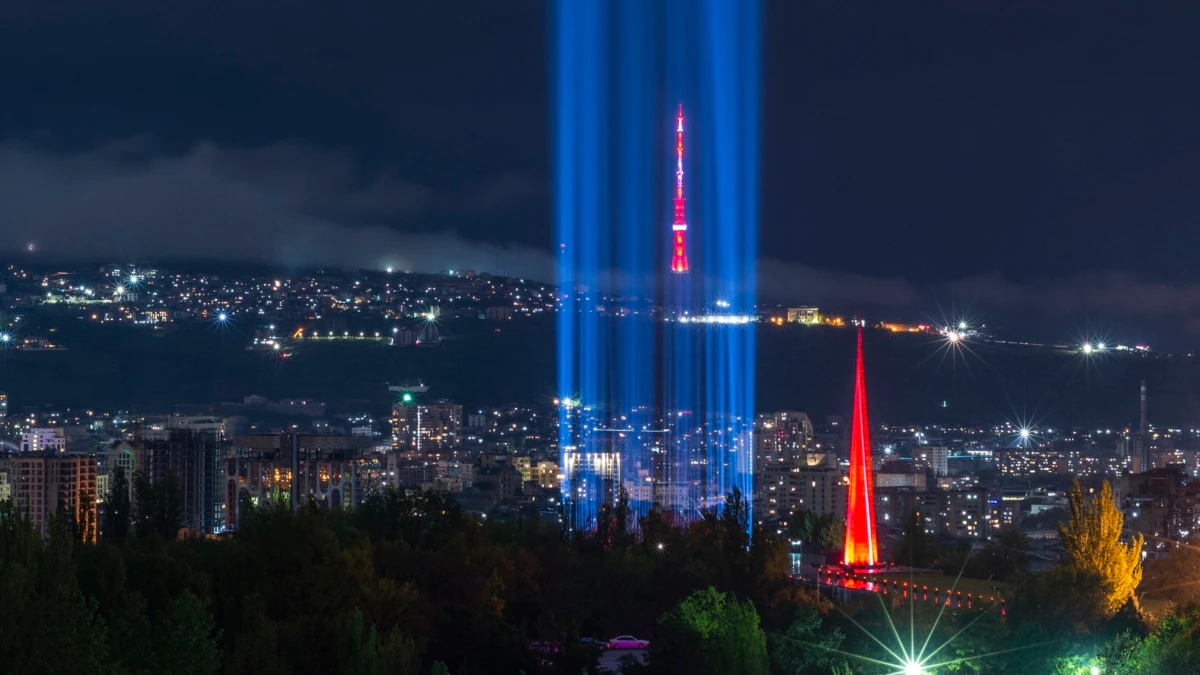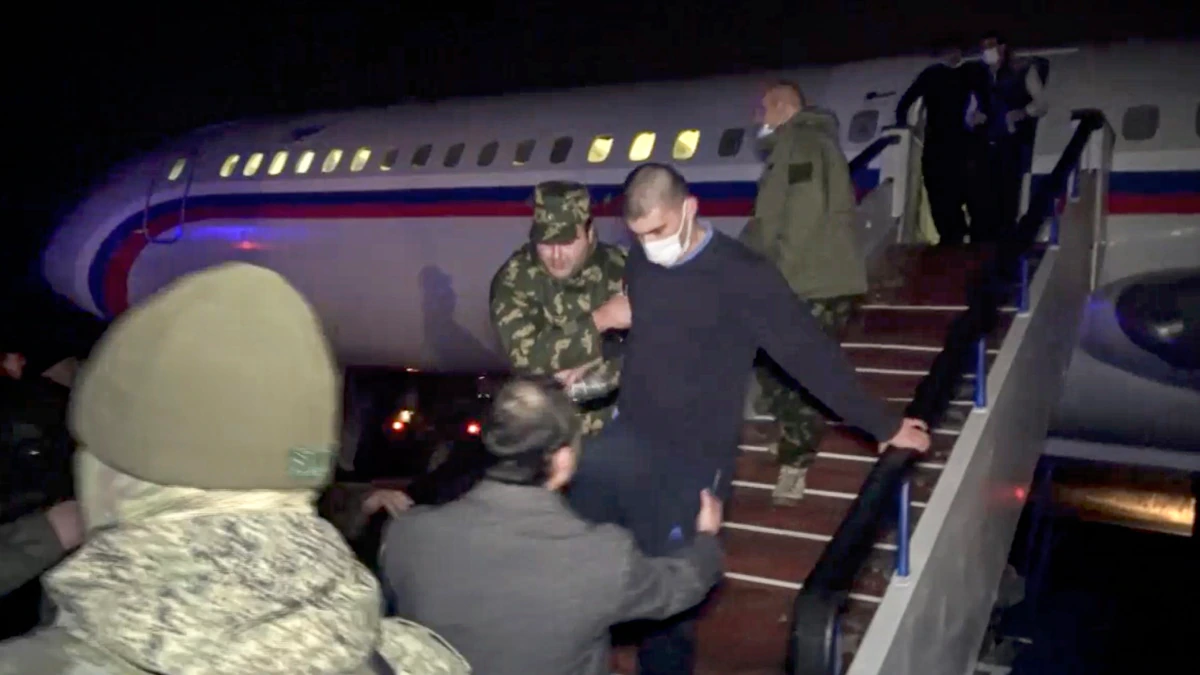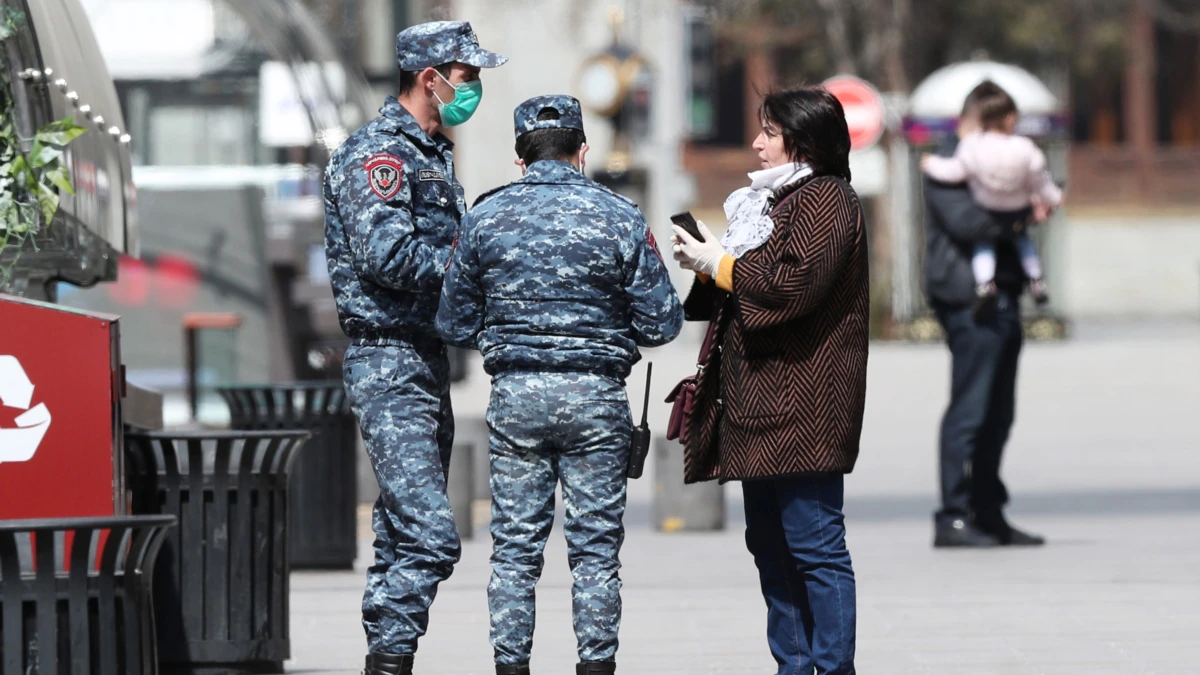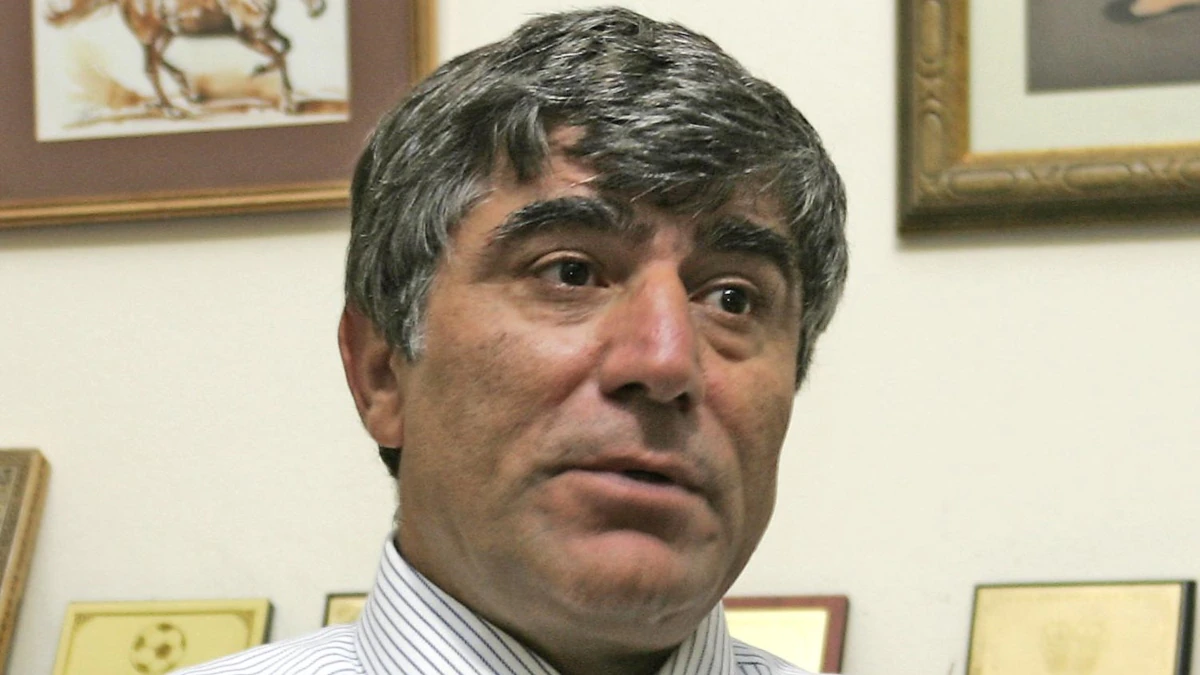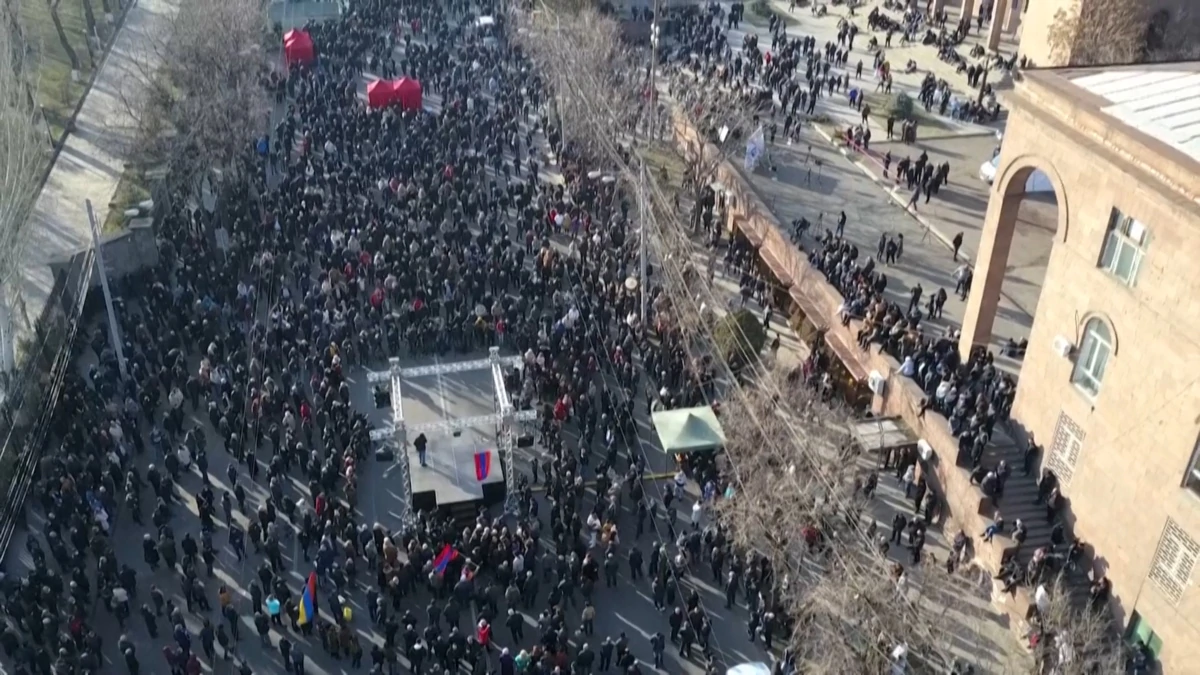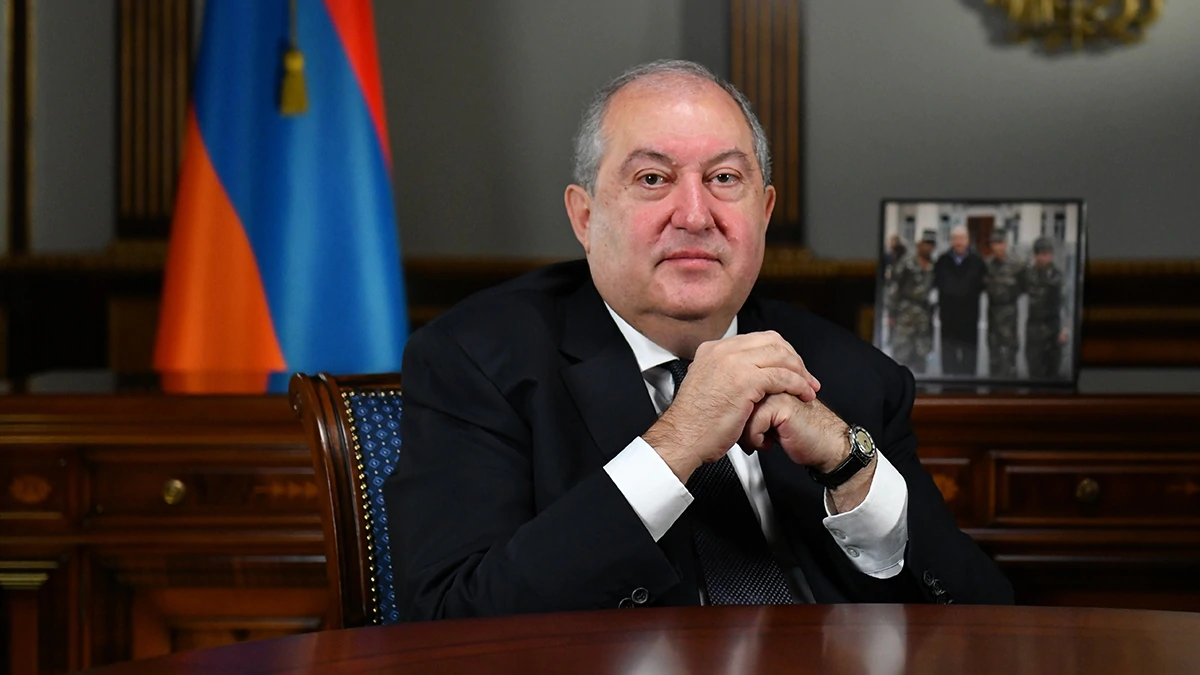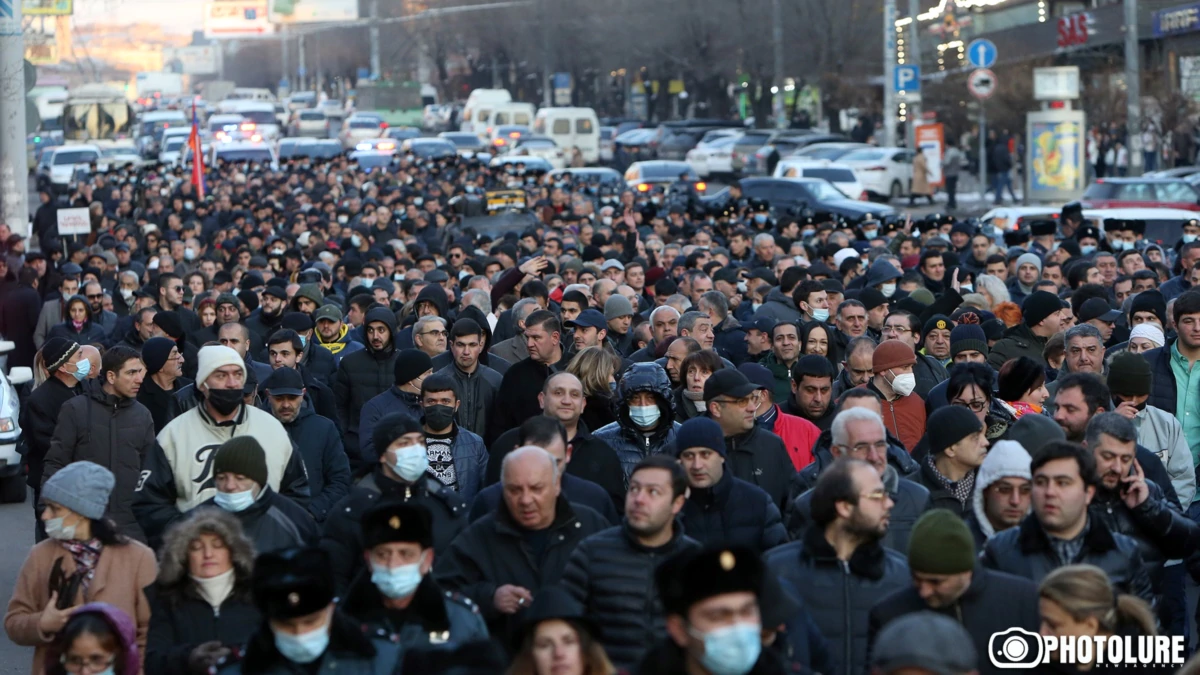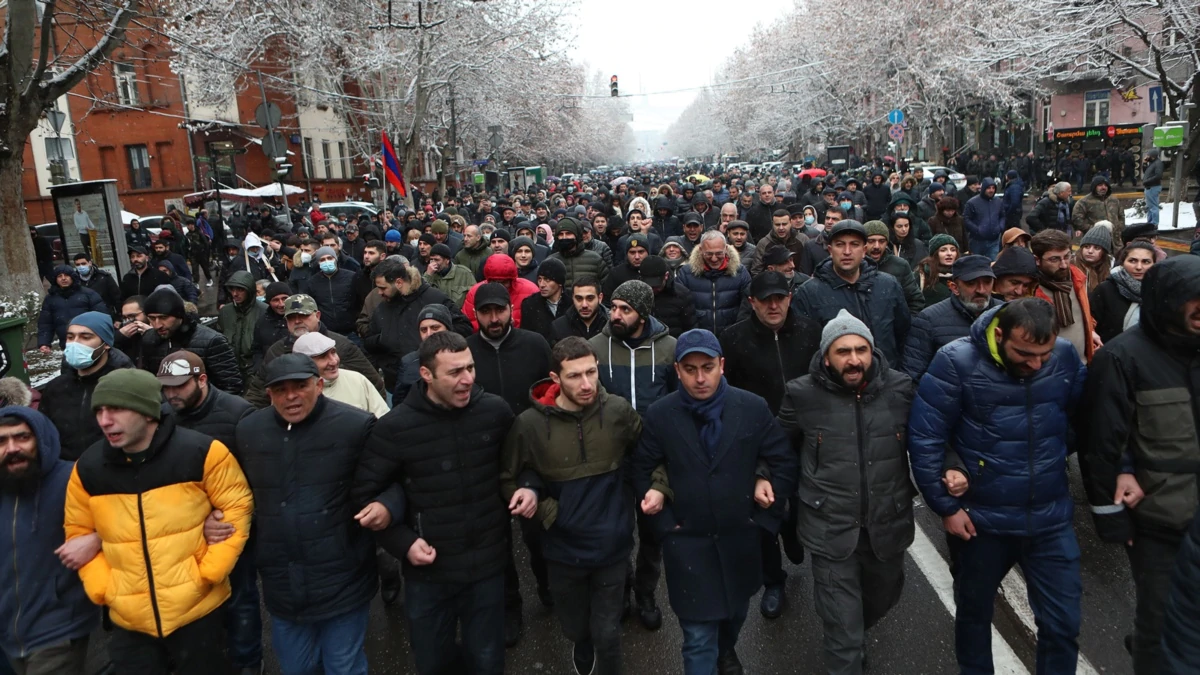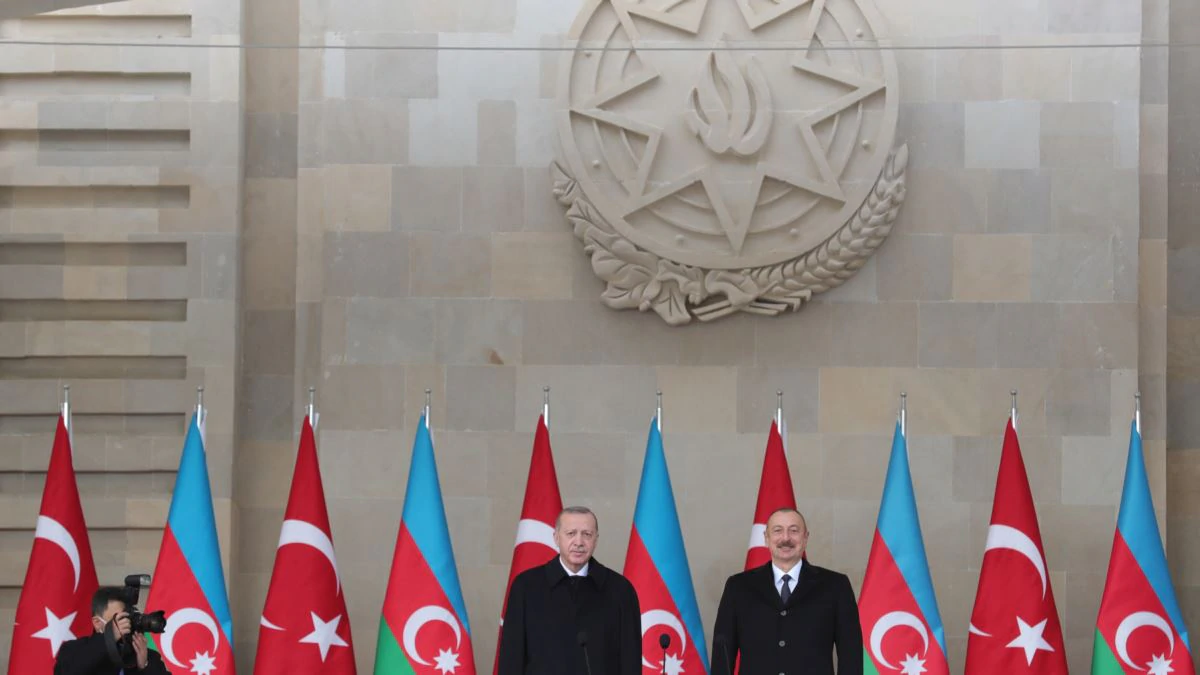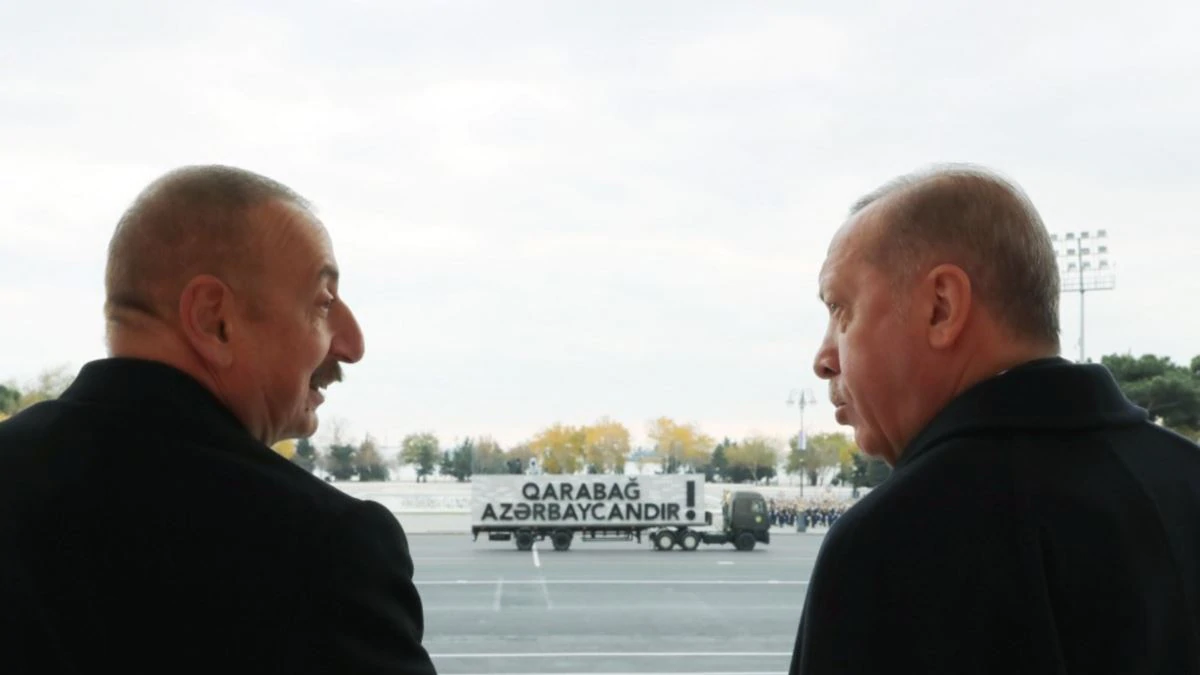It’s April 24, 1915. Some 250 Armenian intellectuals are rounded up in Constantinople and imprisoned by Ottoman police. Known as “Red Sunday,” it is today a day of remembrance for a murderous yearslong campaign that would see the majority of the Ottoman Empire’s prewar Armenian population expelled or exterminated. According to estimates, between 664,000 and 1.2 million people lost their lives.
A century later, recognition of the killings as genocide is still a divisive diplomatic issue, with Turkey and Azerbaijan — who share strong ethnic and cultural ties — officially denying genocide took place. U.S. President Joe Biden promised recognition of the mass killings as genocide during his electoral campaign — a move that had also been promised by President Barack Obama, but which failed to materialize.
Reports now strongly indicate that the Biden administration will, indeed, recognize the killings as genocide on April 24, a day commemorated in Armenia as Genocide Remembrance Day.
In 2019, the U.S. House of Representatives and Senate both passed resolutions recognizing the massacres as genocide, but Biden — if he follows through on his promise — would be the first U.S. president to adopt recognition of genocide as official policy.
What horrific events happened in Turkey beginning in 1915? And what’s behind Biden’s historic move?
Did World War I lead to the killings?
A secret pact between Germany and the Ottoman Empire set the stage for the massacres. Agreeing on the eve of World War I to fight alongside Germany against Russia, the Ottomans received a promise that Germany would be responsible for rectifying their eastern borders “in a manner suitable for the establishment of a link with the Muslim peoples of Russia.”
The empire’s proclamation on entering the war stated that it would establish a new frontier, uniting “all branches of our race.”
Separating the Muslims of Russia from those of Turkey was a large swath of territory inhabited by Armenians, stretching from the eastern part of the Ottoman Empire into Russian territory in the South Caucasus. That population had lived there for hundreds of years, for the most part coexisting peacefully with the Muslim Ottomans and enjoying a significant degree of autonomy.
A number of prominent Armenian families performed important functions for the Ottoman elite, working as architects, gunpowder makers, and administrators of the imperial mint.
After a long period of coexistence, what prompted the Ottomans to embark on an anti-Armenian policy?
Relations between the Armenians and their imperial rulers were fraught before the outbreak of World War I. Emboldened by support from European powers and major Ottoman territorial losses in both the Caucasus and the Balkans, Armenian revolutionary groups were active both in the Ottoman Empire and across the border in Russia by the end of the 19th century.
Groups such as the Dashnaks and Hunchaks organized uprisings, terrorist attacks, and assassination attempts in the Ottoman Empire. Some 100,000 Armenians died at the hands of Ottoman Muslims in massacres in 1895 and 1896, foreshadowing what was to come two decades later.
With the Armenian population split between the Ottoman and Russian empires, the start of the war in 1914 saw tens of thousands of them fighting on both sides of the front in the Caucasus.
However, a significant proportion of Ottoman Armenians were supportive of Russia, and some had cooperated with Russian forces or greeted them as liberators in previous wars throughout the 19th century, such as the Russo-Turkish War of 1877-78, in which Russia annexed the regions of Kars and Batum, which both had large Armenian populations.
This contributed to the Ottoman leadership’s perception of Armenians along the Russian front line as a risk, and their fear was not unjustified. The Russian foreign minister, Sergei Sazonov, ordered that arms be smuggled to Ottoman Armenians in September 1914, ahead of the Ottoman Empire’s expected entry into the war. A Russian diplomat leaving Erzerum in late 1914 wrote:
The Armenian population…is waiting impatiently for the arrival of Russian forces and their liberation from the Turkish yoke. They will hardly risk to stage an uprising before Russian forces arrive on their doorstep, fearing that the smallest delay of Russian assistance will lead to their complete destruction, because, even though they still have weapons hidden in various secret locations, they will not dare to take it because of the state of war proclaimed in the country and the threat of imminent massacres.
The Ottomans began to turn on their Armenian subjects after a major defeat on the Russian front, at Sarikamish, in January 1915. Caucasus expert Thomas de Waal writes that after the disastrous failure of this attempt to advance into the Russian-controlled Caucasus, War Minister Enver Pasha ordered the disarming of non-Muslims in the army, who would be drafted into labor battalions.
This was followed by British and French landings on the Dardanelles, threatening the Ottoman capital. Faced with catastrophe, the Ottomans began deporting and killing Armenians in regions near the Russian front line in February 1915, according to British historian Christopher J. Walker. The position of the Turkish government is that the Ottomans decided to relocate Armenians living in the war zone or areas near the advancing Russian Army, as well as Armenians in other regions who were suspected of collaborating.
The diplomat’s prediction of an uprising was not too far off.
With Russian forces in nearby Persia, Armenians in the city of Van in April 1915 prepared to defend themselves from the Ottomans, who had been searching nearby villages for weapons and arresting suspected rebels. These searches were accompanied by anti-Armenian pogroms.
Rafael de Nogales, a Venezuelan mercenary among the Turkish forces, described witnessing a massacre in the village of Adilcevaz. Confronting an Ottoman official over the killings, he was told that the Ottoman forces, assisted by local Kurds, were carrying out an order from the provincial governor “to exterminate all Armenian males of 12 years of age and over.”
About 55,000 Armenians were killed throughout the province.
Greatly outnumbered and outgunned, Armenian forces, totaling just 1,300 men, held parts of Van for about a month, weathering a siege by the Ottomans and taking in refugees from the surrounding countryside, until Russian forces arrived on May 19, 1915.
When did the killings turn systematic?
The clash over Van marked a tipping point in the Turkish policy, which became much more radical.
A week after Russian forces arrived in the city, the Ottoman government legalized the policy by adopting a Deportation Law. The deportations were conducted openly, with announcements giving local communities a few days to prepare.
According to American historian Eugene Rogan, mass murders of these same deportees were secretly ordered in parallel. Regional officials who did not comply, or who asked for written confirmation, could be removed from their posts or even killed:
“When one district governor in Diyarbakir Province demanded written notice before carrying out the massacre of Armenians from his district, he was removed from office, summoned to Diyarbakir, and murdered en route.”
The U.S. ambassador to the Ottoman Empire, Henry Morgenthau Sr., described the situation as follows in a July 1915 telegram:
“Persecution of Armenians assuming unprecedented proportions. Reports from widely scattered districts indicate systematic attempts to uproot peaceful Armenian populations and through arbitrary arrests, terrible tortures, wholesale expulsions and deportations from one end of the Empire to the other, accompanied by frequent instances of rape, pillage, and murder, turning into massacre, to bring destruction and destitution on them.
“These measures are not in response to popular or fanatical demand but are purely arbitrary and directed from Constantinople in the name of military necessity, often in districts where no military operations are likely to take place. The [Muslim] and Armenian populations have been living in harmony, but because Armenian volunteers, many of them Russian subjects, have joined [the] Russian Army in the Caucasus and because some have been implicated in armed revolutionary movements, and others have been helpful to Russians in their invasion of Van district, terrible vengeance is being taken.
“Most of the sufferers are innocent and have been loyal to [the] Ottoman government. Nearly all are old men, women, all the men from 20 to 45 are in Turkish Army…. Untold misery, disease, starvation, and loss of life will go on unchecked.”
That many of the sufferers were innocent was admitted at the time by the Ottoman interior minister and “architect” of the massacres, Talaat Pasha. In an interview with the Berliner Tageblatt, he said:
“We have been blamed for not making a distinction between guilty and innocent Armenians. [To do so] was impossible. Because of the nature of things, one who was still innocent today could be guilty tomorrow.”
In the same interview, the minister admitted that deportees were being killed — although he put the blame on individual officials and claimed they had been punished. “We are no savages,” he told the newspaper.
The views Pasha expressed privately were quite different, however.
A German envoy wrote that Pasha was unambiguous about the Ottoman government’s intention to “use the world war to make a clean sweep of its internal enemies — the indigenous Christians of all confessions — without being hindered in doing so by diplomatic intervention from other countries.”
In the envoy’s words, Pasha intended to “annihilate the Armenians.”
This was echoed in a report from Germany’s ambassador to Constantinople, Baron Hans von Wangenheim. The expansion of the deportations to provinces far from the front line, he said, “and the manner in which the deportation is being carried out shows that, indeed, the government is pursuing the purpose of annihilating the Armenian race in the Turkish Empire.”
As suggested by the baron’s reference to the expansion of deportations and killings to new provinces, the policy was not carried out evenly throughout the empire. Nor were all parts of the Ottoman state willing participants. Some regional governors asked for their Armenians to be spared or took active measures to save them, and the Ottoman military’s role in the deportations has been described as minimal.
Instead of the military, the massacres were mainly carried out by the so-called Special Organization, an outfit of some 30,000 men that was mainly composed of ex-convicts. The German consul in Aleppo wrote that the Ottoman government had “released convicts from prison, put them in soldiers’ uniforms, and sent them to areas which the deportees are to pass.”
The killings followed the same general pattern, as described by Rogan: A few days after deportation notices were posted, armed men would drive Armenians from their homes. The males aged 12 and up would be separated from the rest and led out of town to be killed. The women, children, and elderly men would be marched from town to town in the blazing heat until they collapsed and died, or would be killed as they fell behind.
Most were marched toward Aleppo, from where the survivors were sent on to other cities along the Euphrates River. By some estimates, less than 10 percent of the prewar Armenian population was left in the Ottoman Empire when it finally collapsed in 1922.
Did the outside world know what was happening?
The atrocities were well-known to the outside world while they were occurring. In a joint diplomatic note protesting the killings, the Entente Powers — Russia, France, and Britain — were the first to use the phrase “crimes against…humanity.”
Besides diplomatic notes and reports home from envoys and ambassadors, the massacres were widely reported in the press. On July 12, 1915, The New York Times wrote: “Armenians have been pitilessly evicted by tens of thousands and driven off to die in the desert near Konia or to Upper Mesopotamia…. It is safe to say that unless Turkey is beaten to its knees very speedily, there will soon be no more Christians in the Ottoman Empire.”
A relief movement formed in the United States, and Ambassador Morgenthau was instructed to inform Constantinople that its policy toward the Armenians had “aroused general and unfavorable criticism among the American people, which is destroying the feeling of goodwill which the people of the United States have held towards Turkey.”
Publicity turned the massacres into a significant political issue in the United States and even featured in President Woodrow Wilson’s campaign for reelection in 1916. The U.S. Congress adopted a resolution in July 1916 urging Wilson to “designate a day on which the citizens of this country may give expression to their sympathy by contributing to the funds now being raised for the relief of the Armenians in the belligerent countries.”
In response, Wilson declared October 21-22, 1916, as Armenian (as well as Syrian) relief days.
What is the Turkish position on the killings and deportations?
Turkey does not deny that many Armenians were killed in the Ottoman Empire during World War I, but the government’s official position is that the “Armenian deaths do not constitute genocide.”
Highlighting deaths among other nationalities of the empire, Turkey justifies the policy of deportations, with a Foreign Ministry website stating that the “Armenians took arms against their own government. Their violent political aims, not their race, ethnicity, or religion, rendered them subject to relocation.”
It also states that “no direct evidence has been discovered demonstrating that any Ottoman official sought the destruction of the Ottoman Armenians as such.”
The United States knew what the Ottomans were doing. Why wasn’t it recognized as genocide back then?
The term “genocide” did not exist while the massacres were taking place. It would only be coined in 1944, before being recognized as a crime in international law with the adoption of the UN’s Genocide Convention in 1948.
This was at the beginning of the Cold War and just a year before NATO was created. Turkey joined the Western military alliance in 1952. Despite the American relief effort and diplomatic interventions on behalf of the Armenians, the killings have remained unrecognized as genocide at the U.S. federal level for over a century — although 49 out of 50 U.S. states, as well as the District of Columbia, have adopted their own resolutions recognizing them as such.
Turkey’s importance as a strategic ally was a major factor in the reluctance to use the word and extend official recognition, with the Trump administration referring to “atrocities” instead and saying bills passed by both the U.S. House and Senate in 2019 that symbolically recognized the killings as genocide did not reflect U.S. policy.
Voting on the Senate bill was even blocked temporarily at the request of the White House in order to avoid offending Turkish President Recep Tayyip Erdogan, who was in the United States when the vote was scheduled.
In 1981, Ronald Reagan became the only sitting U.S. president to refer to the killings as genocide. However, this was in the context of a proclamation issued on Holocaust Remembrance Day and was not a statement of policy.
What has changed and put the United States on the brink of recognizing the killings as genocide?
The decision to recognize the killings as genocide, if it is announced, would come amid a significant worsening of relations with Turkey in recent years, and after a pledge by Biden in his campaign to make “universal human rights a top priority.”
One major bilateral issue is the Turkish purchase of advanced Russian S-400 air-defense systems, which led to the United States kicking Ankara out of the F-35 fighter program and imposing sanctions on the NATO ally’s weapons-procurement sector. Former U.S. Secretary of State Mike Pompeo said that Turkey operating the Russian system would “endanger the security of U.S. military technology and personnel and provide substantial funds to Russia’s defense sector.”
The S-400 purchase is not the only thing contributing to the deterioration of the relationship. The United States has also refused to extradite Fethullah Gulen, whom Turkey accuses of organizing what it calls an attempted coup in 2016. A Turkish military operation against Kurds who fought alongside U.S. forces in Syria also angered Washington, although no action was taken against Ankara by the Trump administration. More recently, Erdogan accused the United States of siding with Armenia in the 2020 Nagorno-Karabakh conflict with Azerbaijan.
Domestically, more than 100 House members signed a letter on April 21 calling on Biden to recognize the killings as genocide. The move has also long been demanded by the significant Armenian diaspora in the United States.
Samantha Power, the UN ambassador under Obama, apologized for that administration’s failure to follow through on its campaign pledge, calling the killings an “open wound.”
The earlier U.S. congressional resolutions drew a rebuke from Turkey’s communications director, who called them “irresponsible and irrational actions…against Turkey.”
If Biden makes good on his promise and the United States joins some 30 other countries, including Russia, with an official policy of genocide recognition, it will certainly anger Ankara and further strain an already uneasy relationship between the two NATO allies.
This post was originally published on Radio Free.










